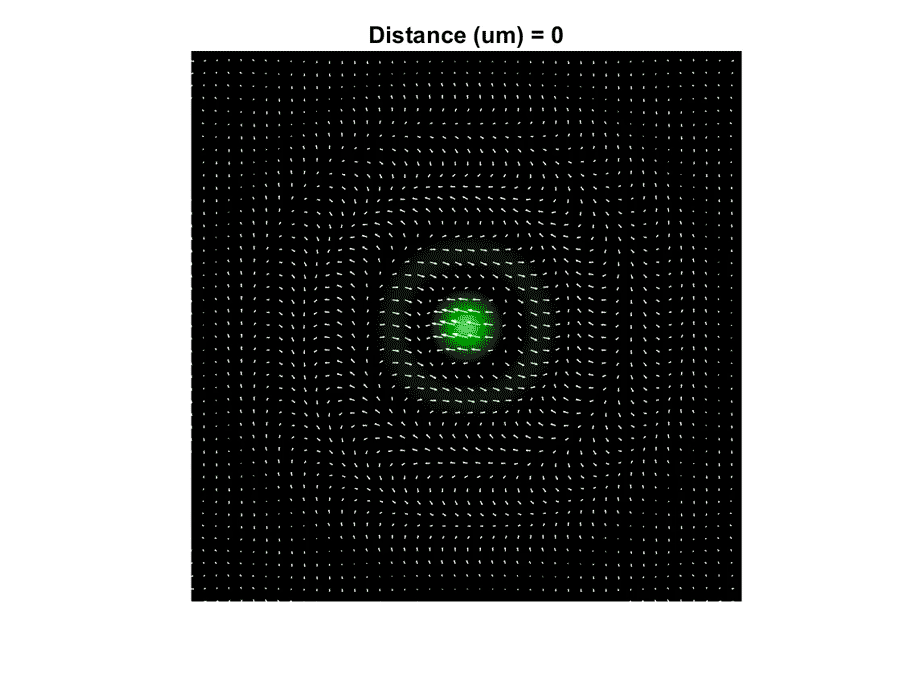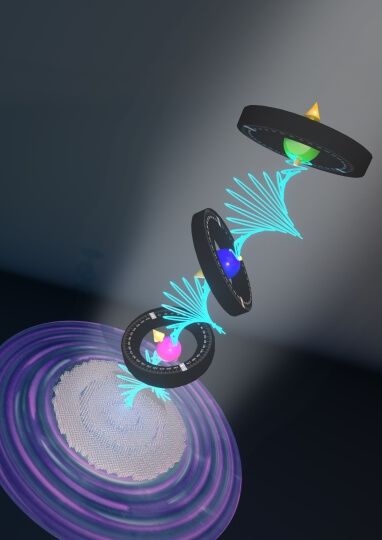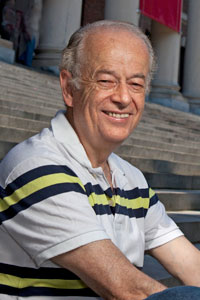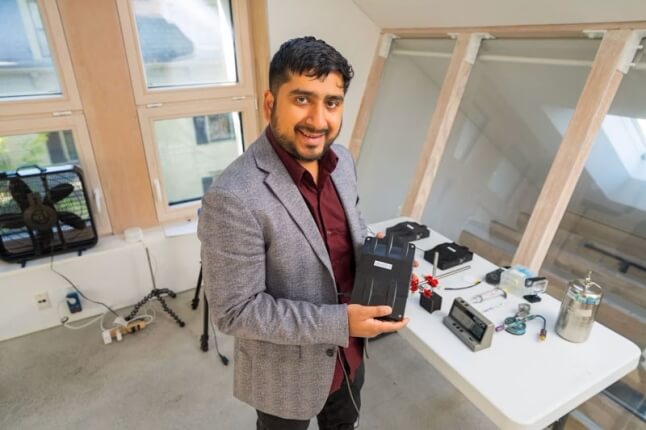News
A single metasurface performs the function of many polarization optics, in parallel, as if they were virtually present. After a single interaction with the multifunctional metasurface, the output light modifies its polarization state (vibration trajectory) as it propagates as if encountering these virtual polarizing elements along its path, enabling new possibilities such as versatile light-matter interaction in 3D. (Image courtesy of Second Bay Studios)
Download ImagePolarization, the direction in which light vibrates, is invisible to the human eye but provides a great deal of information about the objects with which it interacts. Being able to control and characterize the polarization is important for a range of applications, from biomedical imaging to optical communications.
At the Harvard John A. Paulson School of Engineering and Applied Sciences (SEAS), researchers in the lab of Federico Capasso, the Robert L. Wallace Professor of Applied Physics and Vinton Hayes Senior Research Fellow in Electrical Engineering, have been developing compact metasurfaces that can control and manipulate the polarization of light, opening a range of new applications for polarization optics. But, so far, all polarizing elements including these new devices have a limitation: they can’t control the polarization of light as it propagates through space.
“Being able to control the polarization of light along the direction of propagation, would open paths to new applications,” said Ahmed Dorrah, a postdoctoral fellow in the Capasso Lab. “If you want to manipulate light inside a living tissue, for example, you can’t insert multiple polarizers inside a biological tissue without destroying it. What you would want is a remote control for light’s polarization.”
Now, Dorrah, Capasso and a team of researchers have developed a metasurface that can remotely control the polarization of light through space along the path of the beam.
The research is published in Nature Photonics.
The metasurface consists of titanium dioxide nanopillars, arranged in rings on a glass substrate. Each ring of nanopillars, like the ring of a tree, contains information — in this case, polarization information. When light passes through the metasurface, nanopillars encode the polarization information onto the beam. As the beam moves away from the metasurface, it remembers that information and changes polarization, so that at any given point away from the metasurface, the polarization will acquire a specific state.

The movie demonstrates one example of the polarization remote control enabled by the new metasurface optic. Each frame represents a cross section of the output beam, recorded at a different propagation distance. The white arrows depict the polarization state at each point. After a single interaction with the metasurface, the beam changes its polarization state, at-will, at each transverse plane thereafter. (Video courtesy of Ahmed Dorrah/Harvard SEAS)
“In contrast to previous approaches, our device can work for light of any input polarization state,” said Dorrah, who is the first author of the paper.
The metasurfaces were fabricated using a CMOS compatible technology, meaning these compact optical elements could be easily integrated into larger optical systems.
“If we were to replicate our results using competing technologies, like liquid crystal (LC) screens and conventional holographic techniques, we would need to use at least three different LC screens and many other optical components to control the phase, amplitude, and polarization state of the light at any point,” said Noah Rubin, a postdoctoral fellow at SEAS and a co-author of the paper. “This is a bulky setup that can’t be of use in many practical applications and does not provide the same nanoscale-level manipulation offered by metasurfaces.”
“This device allows new and sophisticated states of light in applications where polarization control is essential, including remote sensing, light-matter interaction, and quantum communications,” said Capasso, who is the senior author of the paper.
Next, the team plans to extend the technique to metasurfaces that can control light not only in space but over time, opening many new paths in science and technology.
The paper was co-authored by Aun Zaidi and Michele Tamagnone. It was supported in part by the Air Force Office of Scientific Research (AFOSR), the Office of Naval Research (ONR), and the Natural Sciences and Engineering Research Council of Canada (NSERC).
Topics: Applied Physics
Cutting-edge science delivered direct to your inbox.
Join the Harvard SEAS mailing list.
Scientist Profiles
Federico Capasso
Robert L. Wallace Professor of Applied Physics and Vinton Hayes Senior Research Fellow in Electrical Engineering
Press Contact
Leah Burrows | 617-496-1351 | lburrows@seas.harvard.edu




